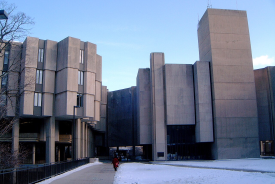Why English Education Must Teach Problem-Solving, Not Just Grammar? To Turn Knowledge into Confidence
Created by
In 2025, English language education is undergoing a quiet revolution. Universities and schools are moving away from grammar drills toward critical thinking, communication, and confidence, skills that define success in today's global workplace. This shift is backed by data: a Harvard Business Review study shows that individuals with strong "basic skills" such as communication, collaboration, and reasoning advance faster in their careers. UNESCO likewise calls for soft skills to become core learning outcomes, not secondary goals. Yet the State of Higher Ed 2025 report reveals a gap: while 88% of employers value problem-solving, only 51% of undergraduates believe they develop it in university.
In response, English teaching must focus on inquiry-based learning, project tasks, and learner agency over rote memorization, says Aygozel Yazmuradova, an educator who unites classical philology with modern, student-centered pedagogy. A philology graduate, she has taught English for over seven years and is now completing her Montessori teacher training at Bellevue Montessori School in Seattle. Her methodology directly addresses the long-standing divide between knowing English and using it. Applied first at the State Academy of Arts of Turkmenistan, her approach helped students win national English Olympiads and earned her a letter of appreciation from the Academy's Rector for excellence in teaching.
But what makes this combination of linguistic rigor and creative learning truly effective—and can it redefine how English is taught in universities today?
How Academic Foundations Shape Modern Pedagogy
The answer begins with what English teachers have long known but rarely act on: linguistic precision and communication skills are not opposites—they depend on each other. Aygozel's background in classical philology gave her a deep respect for grammar and structure, yet her years in the classroom revealed that knowledge alone does not produce fluency. "I noticed that many high-performing students could analyze syntax perfectly but froze when asked to argue a point or speak spontaneously," she recalls. To close that gap, she designed a framework where accuracy and expression evolve together. Each lesson integrates three layers:
- Analytical mastery – students dissect authentic texts to understand language patterns.
- Applied dialogue – debates, role-plays, and project discussions transform analysis into spontaneous speech.
- Reflective writing – creative essays and presentations consolidate vocabulary and argumentation.
In practice, this framework takes shape through debates, creative writing, and project-based collaboration, tools that make language knowledge active rather than theoretical.
"When students prepare for debates or creative projects, they stop memorizing and start connecting ideas," says Aygozel Yazmuradova. "They realize English is not a subject to study—it's a way to express who they are."
Her classrooms confirmed this empirically: around 70% of participants improved their academic results within a year, while several became national Olympiad winners.
"When students start asking questions and creating ideas in English, that's when real progress happens," she adds. "Inquiry and project work don't distract from grammar—they make it meaningful and memorable."
Equally important is her emphasis on mentorship. "I try not to correct students from above," Aygozel explains. "We discuss their ideas together—they listen to themselves, notice patterns, and find better ways to express the same thought. When feedback becomes a conversation, students stop being afraid of mistakes and start using English to think." Such self-reflection, central to the Montessori philosophy she now studies in Seattle, encourages autonomy: learners start viewing English not as a school subject but as a tool for thinking.
In essence, Aygozel's practice demonstrates how philological depth can support, not hinder, communicative freedom. It suggests a path forward for universities that still rely on lecture-based language instruction: shifting from grammar as the goal to grammar as the gateway, a foundation for curiosity, argument, and expression.
Modern education often speaks of "student-centered learning," but few models embody it as consistently as the Montessori approach. Its core idea that curiosity drives understanding better than instruction aligns naturally with Aygozel's experience as an English educator. Now completing her teacher training at Bellevue Montessori School in Seattle, she explores how those same principles can work in language classrooms and even university settings.
"In Montessori classrooms, students are guided, not directed," she says. "They learn to take responsibility for their progress. That mindset completely changes how they approach language—it's no longer about performing for the teacher, but about exploring the world through English."
In practice, this means giving learners ownership of both pace and purpose. Instead of fixed lesson plans, activities evolve around students' questions, why a certain phrase works, how tone changes meaning, and what cultural context lies behind an idiom. This fosters critical inquiry, mirroring the research-based learning models now promoted in universities worldwide.
The parallel is striking: in both Montessori and higher education, the goal is to move from dependency to self-regulation. When students see that language can express curiosity, not just correctness, they start thinking more deeply and communicating more confidently. For future teachers and academics, this is a vital shift that transforms the classroom from a space of instruction into a space of dialogue.
"We can't teach communication by controlling it," Aygozel notes. "When students feel trusted to explore, they find their own voice and that's the real measure of language learning."
As universities rethink how to prepare graduates for an uncertain world, this blend of Montessori autonomy and philological rigor offers a blueprint: education that values not only what students know, but how independently they can learn, question, and express.
© 2025 University Herald, All rights reserved. Do not reproduce without permission.








